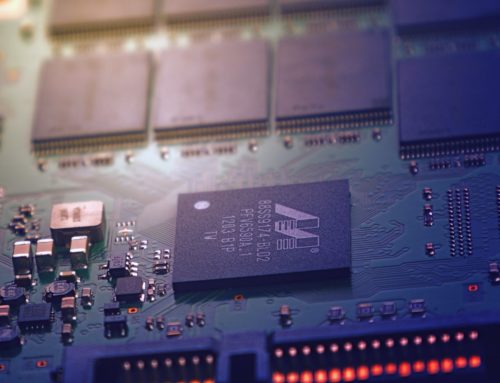In the vast realm of quantum computing, a mythical entity has beckoned researchers and enthusiasts alike for decades—the elusive Holy Grail. This enigmatic concept represents the pinnacle of quantum computing advancement, promising unprecedented computational power beyond our wildest imagination. After years of tireless pursuit and relentless experimentation, it appears that the Holy Grail has finally revealed itself upon the horizon. But before we embark on our journey to unveil the truth behind this tantalizing revelation, let us delve deeper into the enigma that encompasses this extraordinary phenomenon. For in the unpredictable realm of quantum computing, even the most promising developments can be shrouded in uncertainty, leading us to question: is the Holy Grail truly within reach, or is it merely another illusion in the ever-evolving maze of quantum mysteries? Join us as we embark on this quest, where perception blurs and the boundaries of possibility are continuously challenged.
Table of Contents
- 1. Breaking the Bounds of Traditional Computing: The Quest for the Holy Grail Begins
- 2. Quantum Computing Emerges: A Glimpse into the Promised Land
- 3. Unraveling the Mysteries: The Holy Grail of Quantum Computing Finally Within Reach
- 4. Quantum Supremacy Achieved: A Quantum Leap in Computing Technology
- 5. Chasing Shadows: Analyzing the Deceptive Nature of the Holy Grail
- 6. Diving into Quantum Complexity: Is the Holy Grail of Quantum Computing Truly Attainable?
- 7. Separating Fact from Fiction: Unveiling the Elusive Nature of Quantum Computing’s Holy Grail
- 8. Facing the Quantum Paradox: Debunking the Illusion of the Holy Grail in Quantum Computing.
- Q&A
1. Breaking the Bounds of Traditional Computing: The Quest for the Holy Grail Begins
Computing as we know it is on the cusp of a revolution. The boundaries that have confined us for decades are about to be shattered, paving the way for a new era of innovation. In this quest for the Holy Grail of computing, researchers and scientists worldwide are pushing the envelope, venturing beyond the realms of traditional computing.
At the heart of this pursuit lies the desire to create systems that are faster, smarter, and more efficient than ever before. One of the main focuses is the development of quantum computers, which harness the principles of quantum mechanics to perform calculations at unimaginable speeds. These machines have the potential to tackle complex problems that are currently beyond the reach of classical computers.
- Quantum Supremacy: The race for quantum supremacy is well underway, with numerous organizations vying to build the first quantum computer that can demonstrate its superiority over classical computers. Once achieved, quantum supremacy will mark a significant milestone in the quest for the Holy Grail of computing.
- Beyond Binary: Traditional computers operate on bits, which can represent a state of either 0 or 1. However, researchers are exploring alternative computing models that go beyond binary, such as qubits, which can exist in multiple states simultaneously. This promises to revolutionize computing by exponentially expanding its processing capabilities.
As we embark on this journey towards the Holy Grail, the possibilities are both exhilarating and challenging. The quest for groundbreaking computing systems invites us to push the boundaries of what we thought was possible, and in doing so, shape a future that goes beyond our wildest imagination.
2. Quantum Computing Emerges: A Glimpse into the Promised Land
Quantum Computing, once merely a theoretical concept, is now on the verge of revolutionizing the technological landscape. This groundbreaking technology harnesses the fundamental principles of quantum mechanics to perform calculations exponentially faster than traditional computers. As researchers continue to make significant strides in the field, we are witnessing the dawn of a new era in computing.
With its immense processing power, Quantum Computing holds the potential to unlock solutions to complex problems that have remained elusive to classical computers. Here are a few glimpses into the promised land that awaits us:
- Unprecedented Computational Power: Quantum computers have the ability to process an astonishing amount of data simultaneously, enabling them to solve problems in fields such as cryptography, optimization, and simulation that were previously thought to be insurmountable.
- Enhanced Artificial Intelligence: Quantum Computing’s superior computational capabilities could revolutionize machine learning and AI. Quantum algorithms can expedite pattern recognition, optimization of neural networks, and facilitate the creation of more intelligent systems.
- Revolutionizing Drug Discovery: Quantum simulators have the potential to revolutionize the discovery and design of new drugs. By simulating the behavior of molecules at the quantum level, researchers can uncover novel drug candidates and accelerate the development of life-saving medications.
3. Unraveling the Mysteries: The Holy Grail of Quantum Computing Finally Within Reach
In the ever-evolving realm of technology and scientific breakthroughs, quantum computing has long been shrouded in mystery. However, recent developments have sparked excitement as researchers inch closer to unraveling its enigmatic potential. Quantum computing, unlike classical computing, operates on quantum bits or qubits, which utilize the properties of quantum mechanics to perform complex calculations at an unprecedented speed.
One of the most intriguing aspects of quantum computing is its ability to solve problems that are currently unsolvable in conventional computers. From optimizing supply chains to developing life-saving drugs, quantum computers possess the potential to revolutionize countless industries. Imagine the ability to simulate the behavior of atoms, superconductors, or even entire molecules with unparalleled precision, enabling scientists to better understand the intricacies of our world. Additionally, quantum cryptography could pave the way for ultra-secure communication systems, safeguarding sensitive information against even the most sophisticated cyber threats.
- Quantum Supremacy: The long-awaited milestone of achieving quantum supremacy, where a quantum computer outperforms its classical counterpart, seems within reach. This extraordinary achievement would mark a major turning point in scientific research and pave the way for further advancements.
- Fault-Tolerant Quantum Computers: One of the biggest challenges in quantum computing lies in minimizing errors caused by decoherence and environmental noise. Researchers worldwide are working tirelessly to develop fault-tolerant architectures that can overcome these obstacles, making quantum computers more robust and reliable.
- Quantum Algorithms: As quantum computers become more accessible, the development of efficient quantum algorithms is crucial. Experts are designing algorithms specifically tailored for quantum computers, which can exploit the unique properties of qubits to solve complex problems faster and more accurately.
While quantum computing still has a long way to go before reaching its full potential, the strides made in recent years have ignited hope in the scientific community. As the mysteries surrounding quantum computing gradually unravel, the possibilities for its application are becoming increasingly tangible. The Holy Grail of quantum computing, once considered elusive, may soon cease to be a myth, forever changing the landscape of technology and propelling humanity towards a future of limitless possibilities.
4. Quantum Supremacy Achieved: A Quantum Leap in Computing Technology
In a monumental breakthrough, researchers have successfully achieved Quantum Supremacy, marking a significant leap forward in the field of computing technology. This long-awaited achievement has opened up a vast realm of possibilities and promises to revolutionize the way we process data, tackle complex problems, and advance numerous industries.
The achievement of Quantum Supremacy represents a groundbreaking milestone in computing. Here are some key aspects of this quantum leap in technology:
- Unprecedented computational power: Quantum computers can perform calculations at an incredible speed, surpassing traditional computers by an enormous margin.
- Multidimensional problem-solving: Quantum computers operate using quantum bits, or qubits, which allow for the exploration of multiple problem solutions simultaneously, enabling more efficient and accurate problem-solving.
- Potential for breakthrough discoveries: With their immense processing power, quantum computers could facilitate groundbreaking advances in various fields, including cryptography, drug discovery, optimization, artificial intelligence, and many others.
- Enhanced data security: Quantum computing also offers the possibility of developing unbreakable encryption systems, ensuring enhanced data protection and privacy.
The realization of Quantum Supremacy is not only a major scientific achievement but also points towards a future where previously unimaginable feats become achievable. As researchers further explore the potential of quantum computing, it is an exciting time for technological advancements and the dawn of a new era in computation.
5. Chasing Shadows: Analyzing the Deceptive Nature of the Holy Grail
When it comes to the Holy Grail, it is no secret that it has been one of the most enigmatic and elusive objects throughout history. Countless tales, legends, and quests have revolved around its mystical power and the promises it holds. However, beyond the veil of fascination and glory lies a deeper truth – the deceptive nature of the Holy Grail.
1. **Illusions of Immortality:** One of the significant aspects that shroud the Holy Grail is its ability to grant eternal life. This deceptive allure has led many individuals on an obsessive quest, desperately seeking this immortality. Yet, the true nature of the Holy Grail’s promise remains hidden, and those who chase shadows in the pursuit of eternal life often find themselves lost and disillusioned, realizing that true immortality lies in the legacy one leaves behind.
2. **Hidden Meanings and Symbolism:** The Holy Grail has been depicted in various forms throughout history, ranging from a sacred cup to a precious stone. This ever-changing symbolism conceals its true essence, making it nearly impossible to decipher its authentic form. Decades of research and analysis have left scholars in a perpetual state of bewilderment, as the Holy Grail continues to evade definition. Its chameleon-like nature serves as a reminder that truth can often be hidden, forcing us to question whether the pursuit of the Holy Grail is a futile endeavor or an enlightening journey.
6. Diving into Quantum Complexity: Is the Holy Grail of Quantum Computing Truly Attainable?
In the world of quantum computing, one question looms large: can we truly achieve the ultimate goal, the Holy Grail of quantum complexity? This elusive concept refers to the ability to solve problems that are currently out of reach for classical computers through the power of quantum mechanics. It promises remarkable breakthroughs in fields such as cryptography, drug discovery, optimization, and more. However, as we dive deeper into the complexities of quantum computing, the answer to this question becomes increasingly uncertain.
Quantum complexity is epitomized by a variety of factors that pose significant challenges. One of the most critical barriers is the issue of qubit stability. The delicate nature of qubits, the fundamental building blocks of quantum computers, makes them highly susceptible to environmental noise and interference. Achieving the necessary stability to perform complex calculations reliably and consistently remains a formidable obstacle. Additionally, the exponential growth of quantum complexity necessitates an exponential increase in qubit count, exponentially amplifying the difficulties faced. Even with advancements like error correction codes, the road to scalability is paved with intricate hurdles.
7. Separating Fact from Fiction: Unveiling the Elusive Nature of Quantum Computing’s Holy Grail
Quantum computing, with its promise of unparalleled computational power, has captured the imaginations of scientists and enthusiasts alike. However, amidst the hype and speculation, it is crucial to separate fact from fiction in order to truly grasp the elusive nature of its holy grail. Let’s debunk some common misconceptions surrounding quantum computing:
1. **The Quantum Leap**: Contrary to popular belief, quantum computers do not simply supersede classical computers in every aspect. They excel at solving certain types of problems that are believed to be intractable for classical computers. However, for most everyday computational tasks, classical computers remain more efficient and cost-effective.
2. **Quantum Supremacy**: The notion of quantum supremacy refers to the milestone when a quantum computer performs a computation that is infeasible for classical computers. Although this concept is captivating, achieving quantum supremacy is an ongoing challenge. While some experiments have showcased promising results, it is essential to recognize that true quantum supremacy has not yet been definitively demonstrated.
8. Facing the Quantum Paradox: Debunking the Illusion of the Holy Grail in Quantum Computing
Quantum computing, the realm where classical computing meets the mystic realm of quantum mechanics, has long been hailed as the Holy Grail of technology. It promises unimaginable computing power, rendering even the most complex calculations trivial. However, as we venture into this quantum realm, it becomes clear that the Holy Grail of quantum computing may just be an illusion, a paradox that demands our attention and understanding.
One of the most astonishing aspects of quantum computing is the concept of superposition, where a quantum particle can exist in multiple states simultaneously. This mind-boggling phenomenon allows quantum computers to explore vast solution spaces simultaneously, promising exponential computational speedups. However, it is precisely this superposition that gives rise to the quantum paradox. The delicate nature of quantum states makes them extremely vulnerable to noise and interference, leading to an intricate dance between preserving coherence and maintaining stability.
- While quantum computers offer unprecedented computational power, harnessing and controlling the delicate quantum states remains an enormous challenge.
- Noise and interference disrupt the fragile quantum states, requiring complex error correction methods.
- Quantum decoherence poses a significant hurdle on the path towards practical quantum computing.
- Quantum algorithms, often hyped for their power, still lack real-world applications.
To face the quantum paradox, we must dispel the illusion that quantum computing alone can solve all computational problems. By understanding the limitations and complexities inherent in this multidimensional landscape, we can bridge the gap between theory and reality. It is imperative that researchers, scientists, and enthusiasts alike approach quantum computing with a balanced perspective, embracing the promise while acknowledging the hurdles. Only through this delicate dance can we unlock the true potential of quantum computing and move closer to deciphering the enigma of the Holy Grail.
In the ever-evolving realm of quantum computing, the quest for the Holy Grail has been an enduring pursuit. Today, we find ourselves at the precipice of a breakthrough, eagerly grasping for the elusive artifact. But as with any extraordinary endeavor, questions arise, doubts linger, and the truth remains uncertain. The attainment of a true quantum computing marvel hangs in the balance, teetering between a tantalizing reality and a fleeting illusion.
Countless researchers have labored arduously, dedicating their lives to unraveling the secrets of the quantum universe. With each passing year, technological advancements inch us closer to the pinnacle of this momentous achievement. Harnessing the extraordinary power of quantum logic gates, formidable quantum bits, or qubits, now stand poised to transform what was once mere science fiction into fact.
Yet, in the kingdom of quantum computing, appearances can be deceiving. The Holy Grail reveal may, in truth, be a cunning chimera. While some herald the arrival of quantum supremacy—wherein quantum computers outshine their classical counterparts—skeptics raise their placards, questioning whether we have truly crossed that threshold. Is this truly the Holy Grail, or merely a glimpse of its divine potential?
Quantum supremacy displaces long-held beliefs and redraws the boundaries of technological capability. But amidst the jubilation and accolades, a voice of skepticism whispers, challenging us to question. Have we truly unlocked the enigma of scalable quantum computing? Or have we merely opened a door to a realm where uncertainty prevails, and our grasp on truth eludes us?
In the journey towards the Holy Grail, there is no shortage of obstacles. Single qubits falter in the face of instability, decoherence threatens the very fabric of quantum computing, and error correction schemes remain a daunting challenge. The battlefield is strewn with broken dreams and shattered hopes. Yet, the indefatigable spirit of innovation prevails, as brilliant minds collaborate to surmount these obstacles, forging ever ahead towards a quantum revolution.
The Holy Grail beckons not only with promises of incomprehensible computing power but also with the mysteries of quantum teleportation, unhackable cryptography, and breakthroughs in drug discovery. It represents the culmination of progress, the pinnacle of human ingenuity, and the dawn of a new era. But let us remember that the Grail is shrouded in an ethereal haze, forever just beyond our reach.
So, as we cautiously approach the precipice of this quantum leap, we do so with a blend of anticipation and circumspection. Let us celebrate the stunning advances that bring us closer to our destination, while remaining ever vigilant to the shadows of uncertainty. For the Holy Grail of quantum computing, with its extraordinary promise and enigmatic allure, is a quest that transcends decades. Today it is closer than ever, but whether it is finally here or elusive as ever, only time and relentless pursuit will reveal its true nature.




Leave A Comment